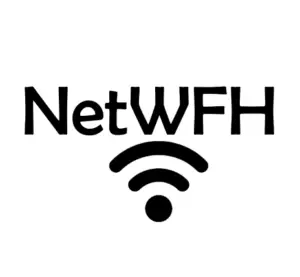This post contains affiliate links.
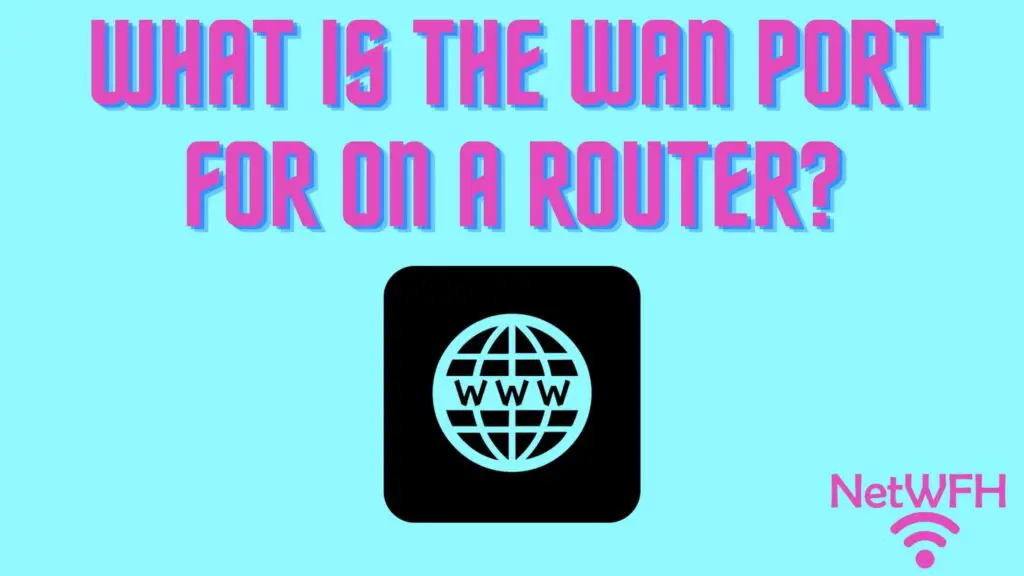
I’m sure you’ve noticed that there are several ports on the back of your router. Are you unsure what the one labeled “WAN” is for?
If so, you’re not alone.
Depending how it’s labeled, the WAN (or internet) port can be confusing.
The WAN port on a router is an ethernet port that is used to provide the router with access to the internet. To get a connection to the internet, an ethernet cable is plugged into the WAN port of the router, and the other end is connected to a modem with an active internet connection.
To put it simply, if your router isn’t connected to a modem through its WAN port, it won’t have internet.
In this post I’ll perform a deep dive into the WAN port on your router and explain how it’s used. I will also be answering a few commonly asked questions about the WAN port.
What Does WAN Stand For?
Most of the confusion with the WAN port comes from the fact that people don’t know what WAN means.
WAN stands for Wide Area Network.
When it comes to your home network, when we talk about a WAN we are referring to the internet.
What Is a WAN Connection?
A Wide Area Network is a communications network that spans a large geographic area. The biggest (and most widely used) WAN in the world is the internet.
It’s easiest to think of it this way: all devices that are connected to the public internet are accessing the same WAN. This includes:
- Mobile phones
- Laptops
- Internet of Things devices (e.g. security cameras and baby monitors)
- Web servers
- Smart televisions
The list goes on and on.
Any time you connect a device to the internet, it has access to the other devices that are publicly available on the internet WAN.
Let’s look at an example.
I’m sure you access your favorite websites with your laptop or mobile device on a daily basis. You can only do this because your internet device and the web servers that host your favorite sites are connected to the same WAN. In other words, they are both connected to the internet.
What would happen if your mobile device wasn’t connected to the same WAN as the web servers that host your favorite sites?
Quite simply, you wouldn’t be able to connect to them.
This is why we need a modem and router in our home network. They allow us to connect our devices to everything else that’s connected to the largest WAN in the world.
What Is a Router’s WAN Port Used For?
Hopefully now you understand the importance of the WAN port on your router. The WAN port is used to provide your devices with access to the the internet.
Take a look at the back of your router. If you don’t see a WAN port, it’s probably because it’s labeled “Internet”. Regardless of how the port is labeled, they are one in the same.
That’s the case with my TP-Link Archer A7 router:

I’m not sure if TP-Link did this because people were getting confused about what the WAN port is for, but labeling the port “Internet” is much easier to understand.
Your router uses the WAN port to relay signals from your devices to your modem. Your modem will then forward those messages out to the desired internet location.
When sites or information are being sent to your devices from the internet, the data flows in the opposite direction. Your modem will receive the requested information from the internet and pass it along to your router via the WAN port. Your router will then send that information to the device that requested it.
Of course I’m simplifying things a bit here, but that’s essentially how the WAN port works.
What Do You Connect to a Router’s WAN port?
If your modem and router are separate devices, you’ll need to connect them. This is done through the WAN port on your router.
All you’ll need to connect your router to your modem is an RJ45 ethernet cable. RJ45 is a standard type of ethernet cable, so almost any ethernet cable you find will fit the bill here. It will be safest to go with the most common type, which is a T-568B cable.
When buying an ethernet cable to connect your modem and router, the most important consideration is the speed the cable supports. You need to make sure the speed supported by the ethernet cable is greater than or equal to the speed of your internet plan (and your WAN port). The last thing you want is for your ethernet cable to slow down your connection.
For more information on selecting the proper ethernet cable for your home network, check out our previous post: Can an Ethernet Cable Slow Your Internet Speed?
One thing to note here is if your modem and router are combined into one device, your job is really easy. They’re already connected so there is no action required on your part. In fact, you won’t even have a WAN port on your device.
What Device Does a Router’s WAN Port Connect to?
Ok, so you need an ethernet cable to connect to your router’s WAN port. Let’s do that first.
Once you’ve connected an ethernet cable to the WAN (or Internet) port, it will look like this:
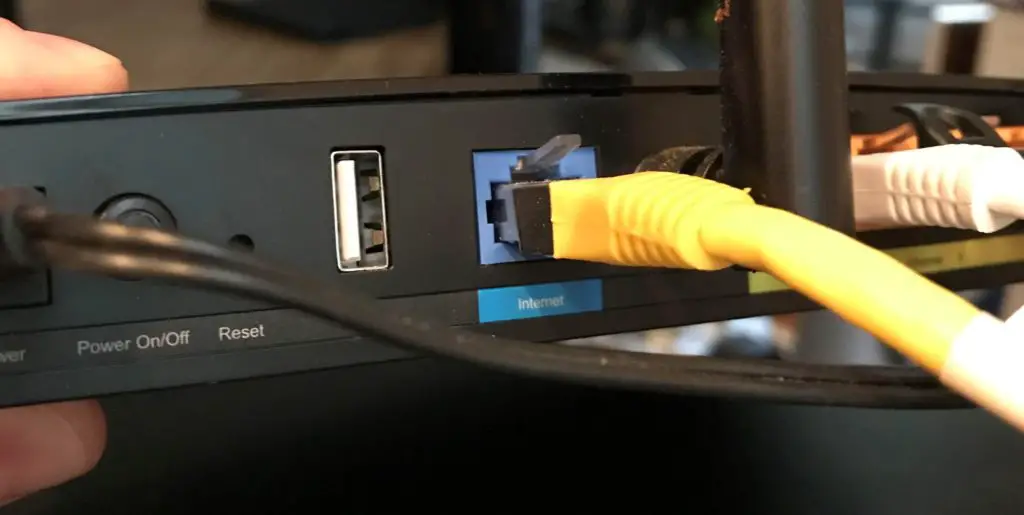
What about the other end of the cable? What does that connect to?
The other end of the ethernet cable will connect to your modem. It shouldn’t be difficult to determine the port to connect the ethernet cable to.
On my router, the port is labeled “Ethernet”. To make things easy, it’s the only ethernet port on the back of my modem. Once we connect my yellow ethernet cord to the Ethernet port on my modem it will look like this:
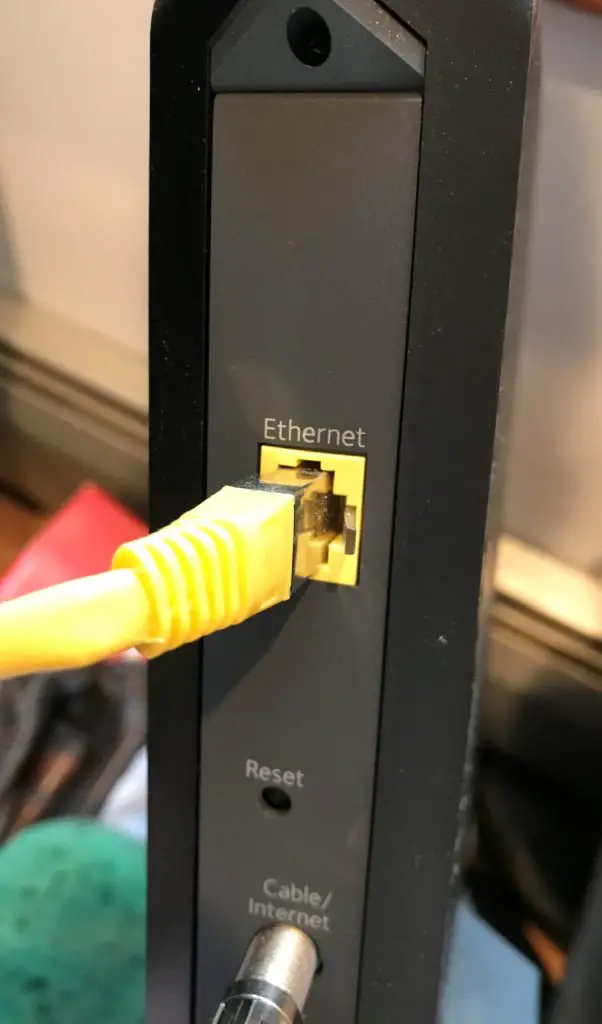
See? It’s very hard to mess up.
Now your modem can pass your router the internet signals it receives from the internet. In other words, if your modem and router are powered on and your modem is connected to the internet, your router should be connected to the internet as well.
You can check to make sure your router has internet access by looking at the lights on it. The internet light on your router will tell you if it’s connected to the internet or not.
What Is the Speed of My Router’s WAN Port?
The speed that your WAN port supports is important to know. It will determine the internet speeds that your router can provide to your internet devices.
So how do you find out the speed that your WAN port supports?
As mentioned previously, the WAN port is an ethernet port. You can look up the specifications of this port by searching for the technical details of your router.
I have a TP-Link Archer A7 router, so with a simple Google search I was able to find what I was looking for.
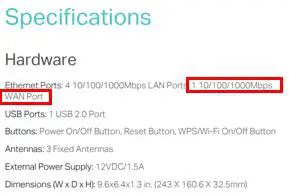
As you can see, my WAN port is a 10/100/1000 megabits per second (Mbps) ethernet port.
What does this mean?
It means that the port can support speeds up to 1,000 megabits per second (or 1 gigabit per second) between my modem and router. This tells me that the fastest that my modem and router can exchange data is at a 1 gigabit per second (Gbps) rate.
In other words, I can’t expect my internet to be faster than 1 Gbps at any given time.
1 Gbps is the fastest ethernet port currently available, so you’ll want to make sure your router has a 10/100/1000 Mbps port as well. If you have a 10/100 Mbps WAN port on your router, you may experience slow internet speeds when multiple devices are using the internet.
The good news is that any newer router will have a 10/100/1000 Mbps port, so you only have to worry about this with an older router.
Is a Router’s WAN Port the Same as an Ethernet Port?
If you take another look at the back of your router, I’m sure you’ll notice it has ethernet ports in addition to the WAN port.
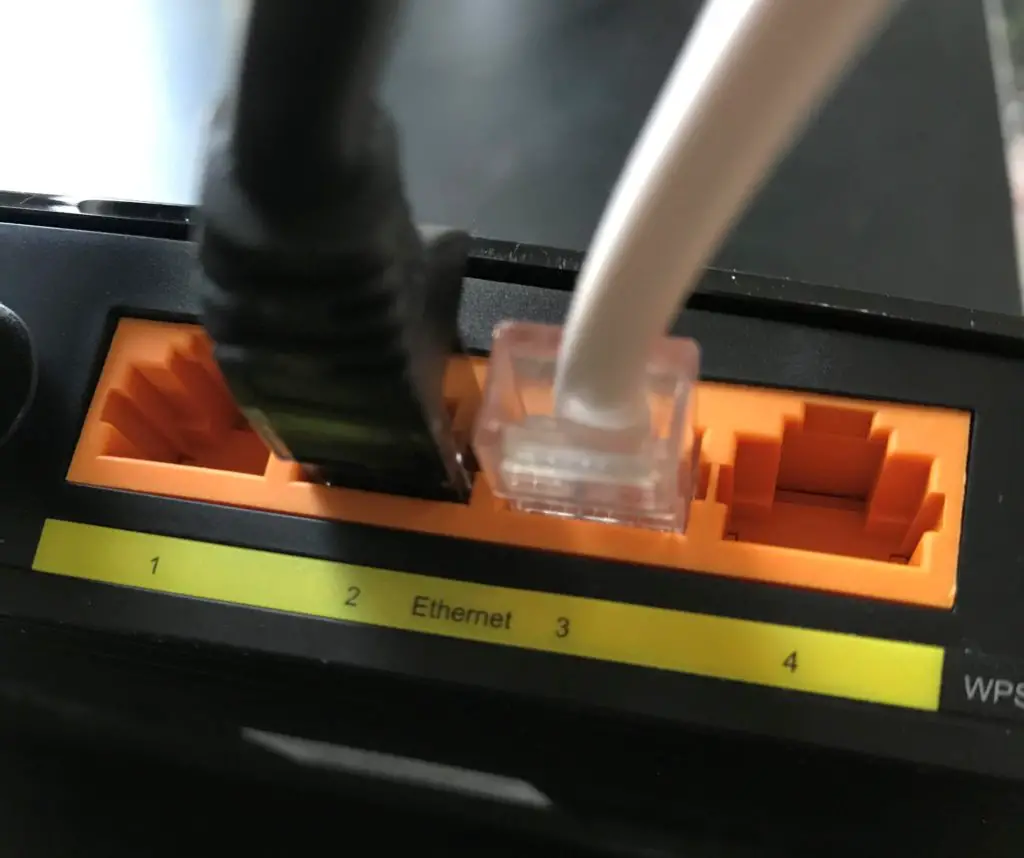
These ports allow your devices to connect to the internet with a wired connection.
You’ve also probably noticed that there’s no difference between these ports and the WAN port on your router. RJ45 ethernet cables will fit into both port types.
This begs the question: is the WAN port the same as a regular ethernet port?
The answer is no.
The WAN port is designed to connect to a modem to receive an internet signal. You can’t use it to connect an additional device to the router if all the ethernet ports are being used.
If you plugged a device into the WAN port on your router, the router wouldn’t have an internet signal. This is the reason why people use routers in the first place. If you just need to connect multiple devices and don’t need access to the internet, you can use an ethernet switch instead.
Wrap Up
The WAN port provides a means for your router to connect to the internet. Without it, your router wouldn’t be able to perform its main function of providing your devices with internet connections.
Do you have any additional questions about the WAN port on your router? If so, feel free to drop a comment below.
If you would like to learn more about your router and how it functions, check out our previous articles:
Can a Router Overheat? A Detailed Analysis
Why Do Routers Have Multiple Antennas?
